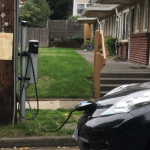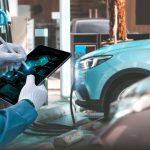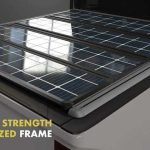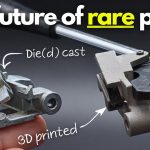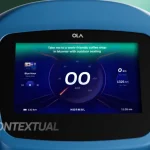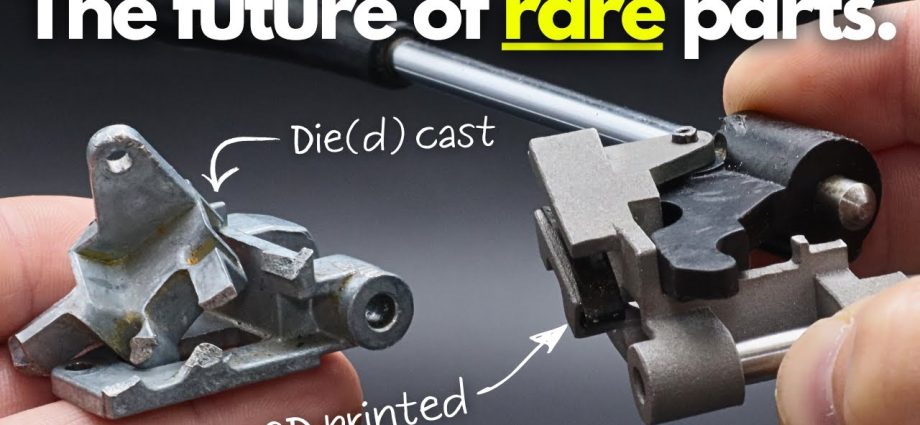The sound of a printer humming to life is no longer just about paper and ink. It’s the sound of a classic car’s long-lost dashboard knob being resurrected. It’s the sound of a custom bracket being forged for an off-road modification. Honestly, it’s the sound of a fundamental shift in how we think about car parts.
3D printing, or additive manufacturing if you want to get technical, is steadily moving from a futuristic novelty to a practical tool for mechanics, restorers, and everyday car enthusiasts. Let’s dive into how this technology is turning the traditional automotive parts supply chain on its head.
Beyond Prototypes: The Real-World Parts Coming Off the Print Bed
Sure, car manufacturers have used 3D printing for prototyping for years. But the real magic is happening now, in repair shops and home garages. We’re not talking about printing an entire engine block—at least, not yet. The current sweet spot lies in parts that are, frankly, a massive headache to source through conventional means.
The Savior of Classic Cars
For owners of vintage vehicles, finding a replacement part can feel like a treasure hunt with no map. Original manufacturers stopped production decades ago. Scrapyards are a crapshoot. This is where 3D printing shines.
Enthusiasts can now scan, design, and print components that are simply unobtainable elsewhere. Think of things like:
- Intricate interior trim pieces
- Specific knobs, buttons, and levers
- Unique badges and emblems
- Complex, non-structural engine bay components
It’s like having a digital time machine for your car’s anatomy.
Customization and Low-Volume Production
Then there’s the world of customization. Want a bespoke phone mount that integrates perfectly with your dashboard? Need a unique bracket for auxiliary lights on your Jeep? 3D printing makes one-off or low-volume production not just possible, but also economical. You’re no longer limited to what’s on the shelf at the auto parts store.
Why This is a Game-Changer: The Tangible Benefits
So, what’s the big deal? Well, the advantages of using 3D printed automotive parts are pretty compelling, touching on cost, time, and even performance.
Dramatically Reduced Lead Times
Waiting weeks for a back-ordered part can leave your car on jack stands, gathering dust. With a 3D printer and the right file, that wait can shrink to hours. This is a massive win for reducing vehicle downtime, both for individuals and commercial fleets.
Cost-Effectiveness for Obsolete Parts
Tooling up for a traditional injection mold for a single, obsolete part is prohibitively expensive. 3D printing eliminates that upfront cost. You pay for the material and the machine time, which for small, complex parts, is often a fraction of the cost of trying to source an original.
Lightweighting and Performance
Here’s a cool one. 3D printing allows for designs that are simply impossible with traditional manufacturing. Using a technique called generative design, software can create complex, organic-looking structures that are incredibly strong and incredibly light. This is a huge deal for motorsports and performance enthusiasts where every ounce matters.
The Flip Side: Challenges and What You Can’t (Yet) Print
Now, let’s be real. It’s not all smooth driving. There are legitimate hurdles and safety considerations that you absolutely must understand.
The Material Question
Not all 3D printed materials are created equal. While common plastics like PLA or ABS are fine for cosmetic knobs, they’re useless under the hood where heat and chemicals are a constant reality. For functional parts, you need advanced materials like:
| Material | Best For | Limitations |
| Nylon (PA) | Durable brackets, intake parts | Can absorb moisture |
| PETG | Fluid-resistant components | Moderate heat tolerance |
| ASA | Exterior parts (UV resistant) | Requires a ventilated space |
| Reinforced Composites (e.g., Carbon Fiber Filled) | High-strength, stiff components | Abrasive to printer nozzles |
The Critical Safety Conversation
This is the big one. You should never, ever 3D print safety-critical components. Think brake calipers, suspension arms, or steering linkage. The risk of layer adhesion failure or material fatigue is just too high. These parts experience immense, dynamic forces that current consumer-level 3D printing technology isn’t consistently reliable for. It’s not worth the risk.
The general rule of thumb? If a part’s failure could directly cause an accident, it’s off-limits for home printing. For now, at least.
Getting Started: Your Roadmap to 3D Printed Car Parts
Feeling intrigued? Here’s a quick, practical guide to how the process actually works.
1. Sourcing the Design (The Digital Blueprint)
First, you need a 3D model file (usually an .STL). You can:
- Find it Online: Sites like Thingiverse or Cults3D have a surprising number of car part files uploaded by the community.
- 3D Scan It: If you have a broken part, you can 3D scan it and repair the model digitally.
- Design it from Scratch: Using CAD software like Fusion 360 or Tinkercad. This requires the most skill but offers total control.
2. Choosing the Right Printer and Material
For most automotive applications, a Fused Deposition Modeling (FDM) printer is the workhorse. You’ll need to match the material to the part’s function, as we touched on earlier. A simple interior clip? PETG is great. An under-hood bracket? You’ll probably want Nylon or ASA.
3. Post-Processing for a Perfect Fit
The part doesn’t always come out perfect. A little sanding might be needed. Sometimes parts need to be annealed (heat-treated) for extra strength. It’s a bit like woodworking or metalworking—the finish work is what separates a amateur job from a professional one.
The Road Ahead
So, where is all this heading? We’re already seeing major car manufacturers create digital spare parts warehouses. Instead of storing physical inventory for decades, they can simply store the digital file and print parts on demand. This is a logistical and financial revolution for them.
For you and me, the implications are just as profound. It empowers self-reliance. It preserves automotive history that would otherwise rust away. It democratizes customization. The barrier is no longer mass-production tooling; it’s imagination and a digital file.
The relationship between driver and machine is becoming more direct, more creative, and frankly, more personal. The garage of the future might just have a printer sitting right next to the toolbox.


